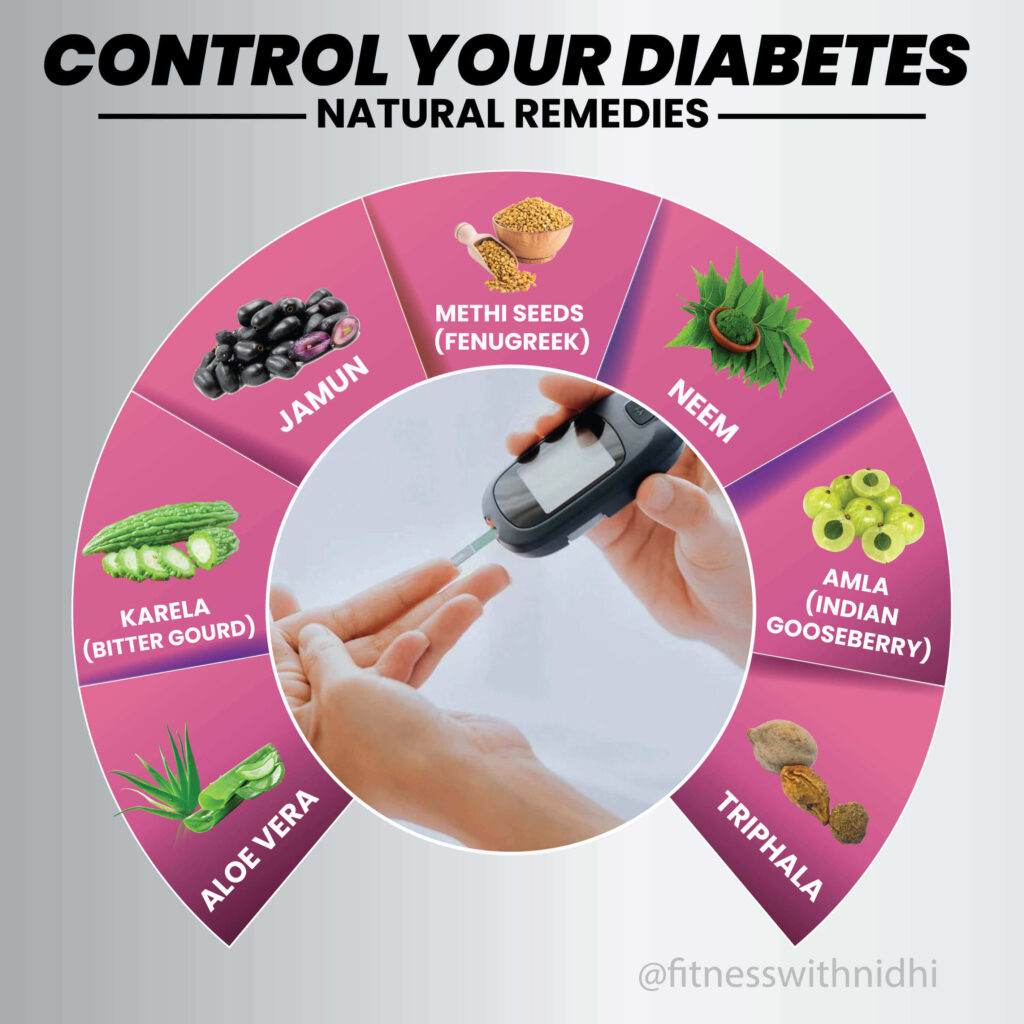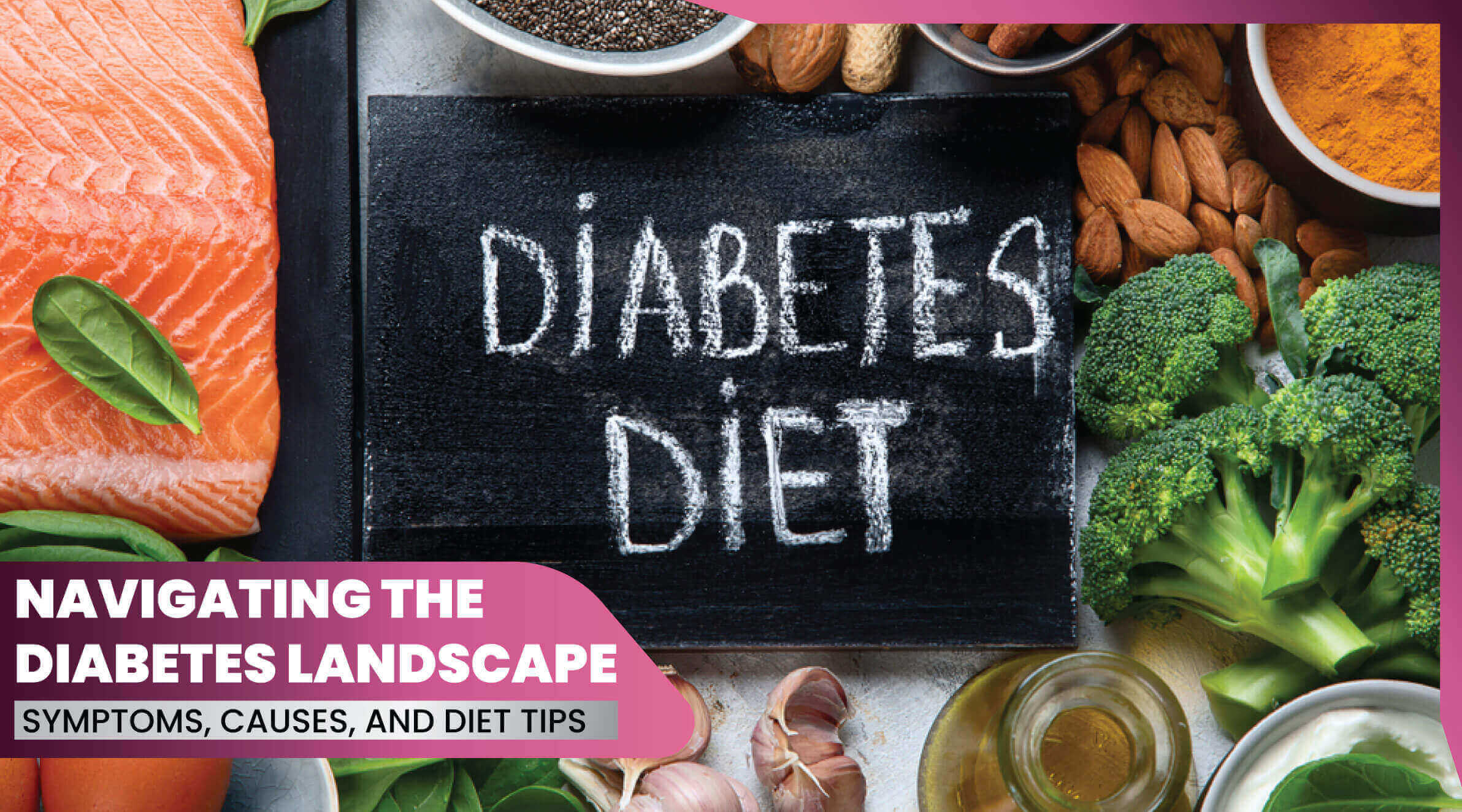According to WHO, Diabetes is a chronic disease and the consequences may be averted with proper diet, physical activity, medication and treatment
What is Diabetes?
Diabetes is a group of diseases that results from excessive sugar in the blood (high blood glucose) which results in hyperglycemia. Blood glucose level is maintained by a hormone called insulin which is secreted by pancreas. Langerhan cells of pancreas release insulin. Diabetes happens when insulin is absent or the amount of insulin decreases that’s required to preserve blood glucose levels.
Symptoms of Diabetes
Sometimes there aren’t any signs and symptoms but common symptoms of diabetes are excessive thirst or urination, fatigue, weight loss or blurred vision.
Types of Diabetes
1. Type 1 Diabetes / insulin dependent diabetes
A condition in which the pancreas produces very little or no insulin. This is referred to as juvenile diabetes and occurs at the age of 6 years to adolescence. it is an autoimmune action in which beta cells of pancreas destroy by immune system.
2. Prediabetes
A condition in which blood sugar levels are higher than normal but not high enough to be categorised as type 2 diabetes. Prediabetes is often asymptomatic and is discovered during routine blood tests. Risk factors for prediabetes include being obese, history of diabetes, physical inactivity and PCOS.
3. Type 2 Diabetes
Type 2 diabetes is associated with lifestyle factors such as being overweight, sedentary lifestyle and unhealthy eating pattern.
In this the body becomes resistant to insulin, a hormone that regulates blood sugar levels. The beta cells produce the insulin but cells of the body get resistant to it, resulting in high blood sugar levels and leading to various health problems.
4. Gestational Diabetes
Also known as high blood glucose level during pregnancy. This is due to hormonal changes that occur during pregnancy and placenta release some hormones which leads to high blood glucose level
People who develop gestational diabetes are more prone to developing type 2 diabetes later in life.
Gestational diabetes affects 2-10% of pregnancies and typically develops in the 24th to 28th week of pregnancy.
What causes diabetes
- Overweight
- Stress
- Family history
- Sedentary lifestyle
- Bad eating habits
How to reduce the risk of diabetes
Type 1 Diabetes can’t be prevented but getting into a healthy lifestyle will help with prediabetes, gestational diabetes, type 2 diabetes.
Reducing the risk of diabetes primarily involves lifestyle changes. Here are some strategies:
- Healthy Eating: Follow a balanced diet rich in fruits, vegetables, whole grains, lean proteins, and healthy fats. Limit intake of processed foods, sugary drinks, and high-fat foods.
- Regular Exercise: Engage in physical activity for at least 30 minutes a day, five days a week. This could be brisk walking, cycling, swimming, or any form of exercise that you enjoy.
- Maintain a Healthy Weight: If you’re overweight, even a modest weight loss can help prevent or manage diabetes.
- Limit Alcohol and Avoid Smoking: Excessive alcohol can lead to weight gain and may increase your blood pressure and triglyceride levels. Smoking increases the risk of diabetes and other health conditions.
- Regular Check-ups: Regular health check-ups can help detect prediabetes, which can be managed or reversed with lifestyle changes and medication if necessary.
- Manage Stress: High stress levels can affect your blood sugar levels. Techniques such as yoga, meditation, and deep breathing can help manage stress.
- Adequate Sleep: Lack of sleep can increase the risk of diabetes. Aim for 7-9 hours of sleep per night.
- Regular Blood Sugar Monitoring: If you’re at risk of diabetes, regular monitoring of your blood sugar levels can help you manage your diet and activity levels better.
Remember, it’s important to consult with a healthcare provider before starting any new health regimen. They can provide guidance based on your individual health needs and risk factors.
Foods to avoid in Diabetes
Food plays a major role in diabetes, what you actually put in your belly matters a lot. Here is a list of foods that you have to avoid if you are diabetic.
If you have diabetes, it’s important to avoid certain foods that can spike your blood sugar levels or contribute to weight gain. Here are some foods that are generally best to avoid or limit:
- Sugary Drinks: This includes sodas, sweetened iced teas, fruit drinks, and energy drinks. These beverages can quickly raise your blood sugar levels.
- Trans Fats: These are found in some margarines, peanut butter, spreads, creamers, and frozen dinners. They’re also in many baked goods and fried foods.
- White Bread, Pasta, and Rice: These foods are high in carbohydrates, which can raise blood sugar levels. Opt for whole-grain alternatives when possible.
- Fruit-Flavored Yogurt: Plain yogurt can be a good choice, but fruit-flavored yogurts often contain lots of added sugar.
- Sweetened Breakfast Cereals: They’re often high in sugar. Look for cereals with less sugar and more fiber.
- Flavored Coffee Drinks: These are often high in calories and sugar. A better choice is black coffee or herbal tea.
- Honey, Agave Nectar, and Maple Syrup: While these are natural sweeteners, they can still raise your blood sugar levels.
- Dried Fruit: This can be a good source of nutrients, but it’s also high in sugar and can raise blood sugar levels. Fresh or frozen fruit is a better choice.
- Packaged Snack Foods: Avoid snacks like crackers, chips, and pretzels as they can be high in refined flour and salt.
- Fried and Fast Foods: High in unhealthy fats and sodium, these can lead to weight gain and higher blood pressure.
- Alcohol: Alcohol can cause blood sugar to either rise or fall, and can interfere with diabetes medication.
Remember, everyone’s body responds differently to different types of foods and diets, so it’s important to monitor your blood sugar levels before and after meals. Always consult with a healthcare provider or a dietitian for personalized advice.
Diabetes Diet
A diabetes diet is essentially a healthy eating plan that will help you control both your weight and blood sugar, while also preventing diabetes complications. Here are some general guidelines:
- Whole Grains: Foods like brown rice, oatmeal, quinoa, and whole grain bread or pasta are good choices. They have more fiber, which can slow the absorption of sugar into your bloodstream and prevent spikes in glucose.
- Lean Proteins: Choose lean meats like skinless chicken, turkey, fish, eggs, tofu, and low-fat dairy products. These foods will provide you with necessary protein without extra fat and calories.
- Fruits and Vegetables: These are high in vitamins, minerals, and fiber, but low in calories. Eat a variety of fruits and vegetables to get a wide range of nutrients.
- Healthy Fats: Foods with monounsaturated and polyunsaturated fats help reduce levels of “bad” LDL cholesterol and increase “good” HDL cholesterol. Avocados, olives, nuts and seeds, and fish like salmon and mackerel are high in these healthier fats.
- Non-Starchy Vegetables: Non-starchy vegetables like spinach, broccoli, and bell peppers have fewer carbs than starchy vegetables like potatoes and corn. This makes them a good choice for people with diabetes.
- Portion Control: Pay attention to portion sizes to avoid overeating. Even healthy foods can lead to weight gain and higher blood sugar levels if you eat too much at once.
- Regular Meals: Try to eat regular meals at around the same time each day. This can help maintain steady blood sugar levels.
- Limit Added Sugars: Limit foods and drinks with added sugars, such as sodas, candies, and desserts. They can cause blood sugar spikes and contribute to weight gain.
Remember, everyone is different, so what works for one person may not work for another. It’s important to monitor your blood sugar levels and consult with your dietitian or doctor to determine the best dietary choices for you.
4 Diabetes Salad Recipe
There are a lot of high protein, low carb salads that you can include in your diet and which will also help in weight loss.
- Chickpea and Raw Mango Salad
- Mixed Bean Salad
- Makhana Paneer Salad
- Sprouts Paneer Salad
6 Diabetes Superfoods

What are the various other diabetes complications?
Various complications associated with diabetes are categorised under two broad categories:
Chronic condition:
- Eyesight problems / retinopathy
- Damaged nerves / neuropathy
- Kidney problems / nephropathy
- Heart attack and stroke
- Gum disease
Acute conditions:
- DKA (diabetic ketoacidosis): High blood sugar levels lead to a buildup of ketones in your body. This condition is reversible with low GI foods and a well balanced lifestyle.
- HHS (hyperosmolar hyperglycaemic state): it is a life-threatening emergency that occurs in people with type 2 diabetes. It is caused by severe dehydration and very high blood sugar levels.
Frequently Asked Questions
Is Prediabetes curable?
What are the early symptoms of diabetes?
1 Urinating often
2 Feeling very thirsty
3 Feeling very hungry





